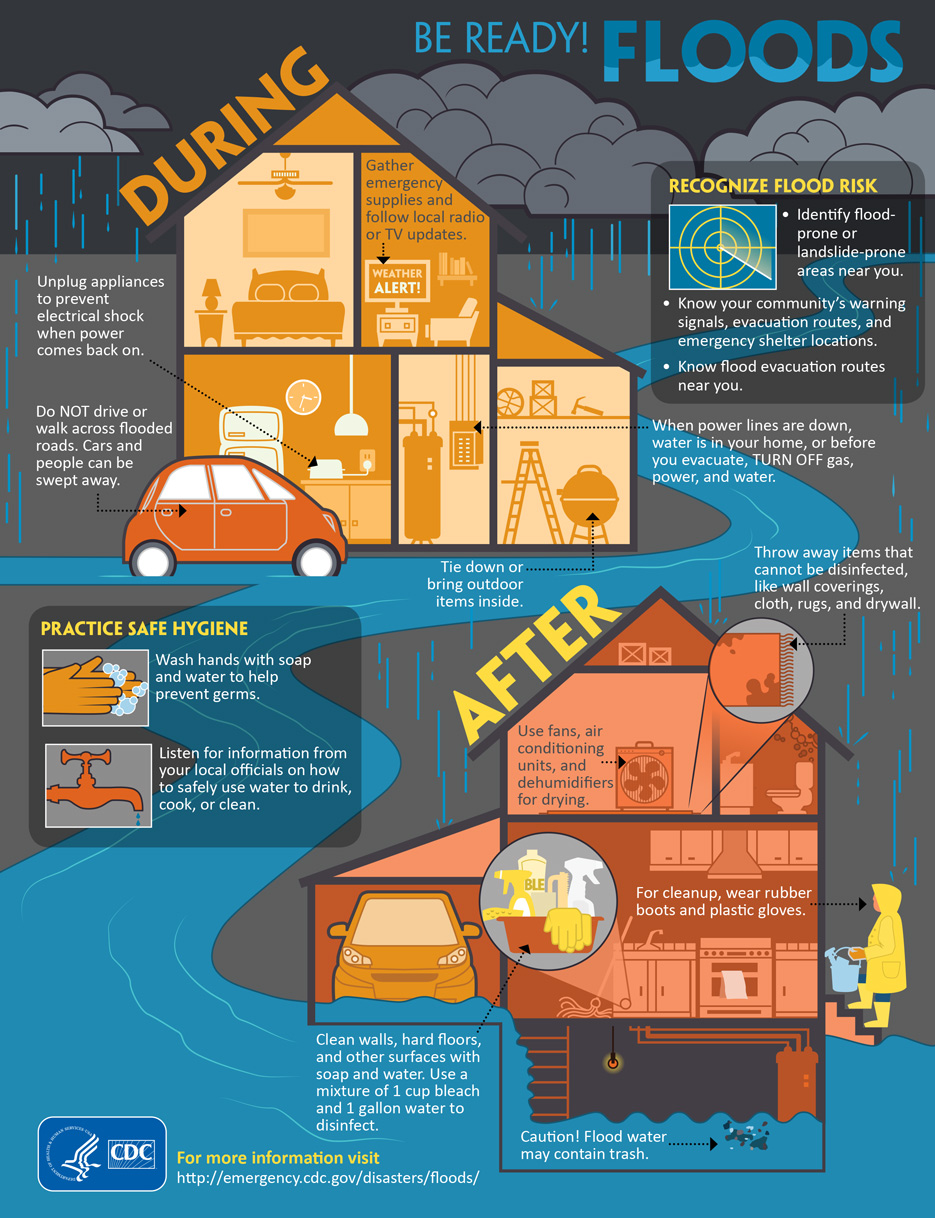
Hurricane Season Special Warnings
Hurricane Season & Flood Awareness
The warm weather of summer brings with it the start of another change in weather commonly known as “hurricane season.” During this 6-month period from June through November, the likelihood for hurricanes and tropical storms that impact the eastern United States is extremely high. While hurricane events in Prince George’s County are quite rare, the possibility of associated tropical storms, intense thunderstorms, and flood events are very real.
Reducing Likelihood of Flood Losses
Residents and business owners located near a stream may wish to take measures to safeguard against potential losses associated with flooding. The Prince George’s County Department of the Environment (DoE) has a number of services available to assist local home and business owners with information about how to reduce the likelihood of flood losses. DoE administers a comprehensive floodplain management program that includes:
- Administration of a floodplain/stormwater management ordinance to prevent building in the floodplain and reduce the effects of development on “downstream” properties
- Construction of capital projects to alleviate drainage and flooding problems:
- Drainage systems
- Floodwalls
- Levees
- Stormwater management ponds
- Dissemination of floodplain information to residents, businesses, lenders and insurance companies
- Participation in the National Flood Insurance Program/Community Rating System which enables county residents to purchase flood insurance at a reduced rate
- Technical assistance to property owners with flooding and drainage problems
Flood Insurance
A review of the floodplain studies prepared by FEMA and DoE can determine if your property is located in or near the floodplain. Perhaps the single most important measure that owners of flood prone property can make is to purchase flood insurance. To obtain additional information on the location of your property as it relates to the floodplain, call the Department of Permitting, Inspections and Enforcement at .
For more information on how to obtain flood insurance call the National Flood Insurance Program at . Information on flood insurance, flood safety tips, flood and disaster preparedness can also be found on the FEMA website, and at the Maryland Department of the Environment (MDE) website. Although flooding and other natural disasters can strike at any time, advance planning and preparedness will go a long way in reducing the impacts of a natural disaster.
June is Flood Awareness Month in Prince George's
June marks the beginning of hurricane season, and severe weather conditions can cause flooding, threaten lives, and damage property. Your Department of the Environment (DoE) wants to help County residents and business owners protect their homes, buildings, and personal belongings if flooding occurs and to be flood ready, flood smart, and flood safe.
The best time to make a flood plan is now. DoE offers flood prevention tips and information and a Flood Awareness poster that provides information on what causes flooding and how to prevent and protect homes and businesses in the case of a flood.
CDC: Be Ready - During and After Floods

For more information and to download a copy of the above flyer in English and Espanol, visit https://www.cdc.gov/floods/safety/index.html
-
During
- Gather emergency supplies and follow local radio or TV updates.
- Unplug appliances to prevent electrical shock when power comes back on.
- Do NOT drive or walk across flooded roads. Cars and people can be swept away.
- When power lines are down, water is in your home, or before you evacuate, TURN OFF gas, power, and water.
- Tie down or bring outdoor items inside.
- Recognize Flood Risk
- Identify flood-prone or landslide-prone areas near you.
- Know your community’s warning signals, evacuation routes, and emergency shelter locations.
- Know flood evacuation routes near you.
-
After
- Throw away items that cannot be disinfected, like wall coverings, cloth, rugs, and drywall.
- Use fans, air conditioning units, and dehumidifiers for drying.
- For cleanup, wear rubber boots and plastic gloves.
- Clean walls, hard floors, and other surfaces with soap and water. Use a mixture of 1 cup bleach and 1 gallon water to disinfect.
- Caution! Flood water may contain trash.
- Practice Safe Hygiene
- Wash hands with soap and water to help prevent germs.
- Listen for information from your local officials on how to safely use water to drink, cook, or clean.
